Since the late 1960s, the Defy has been Zenith’s go-to recipe for a progressive take on watchmaking. In this article, from the May-June 2020 issue, WatchTime takes a look at the current state of the Swiss brand’s collection.
More than 50 years ago, Zenith introduced a new type of sports watch under the name Defy. As a member of the LVMH Watch Division, and under the leadership of Zenith’s CEO Julien Tornare, the brand successfully developed the Defy into one of its most innovative and creative product ranges, both in terms of movement expertise and materials. This year, the Defy finally saw the launch of a new women’s watch collection, the Defy Midnight, and some surprising launches with car manufacturer Land Rover and with Carl Cox, a British house and techno record producer and DJ.
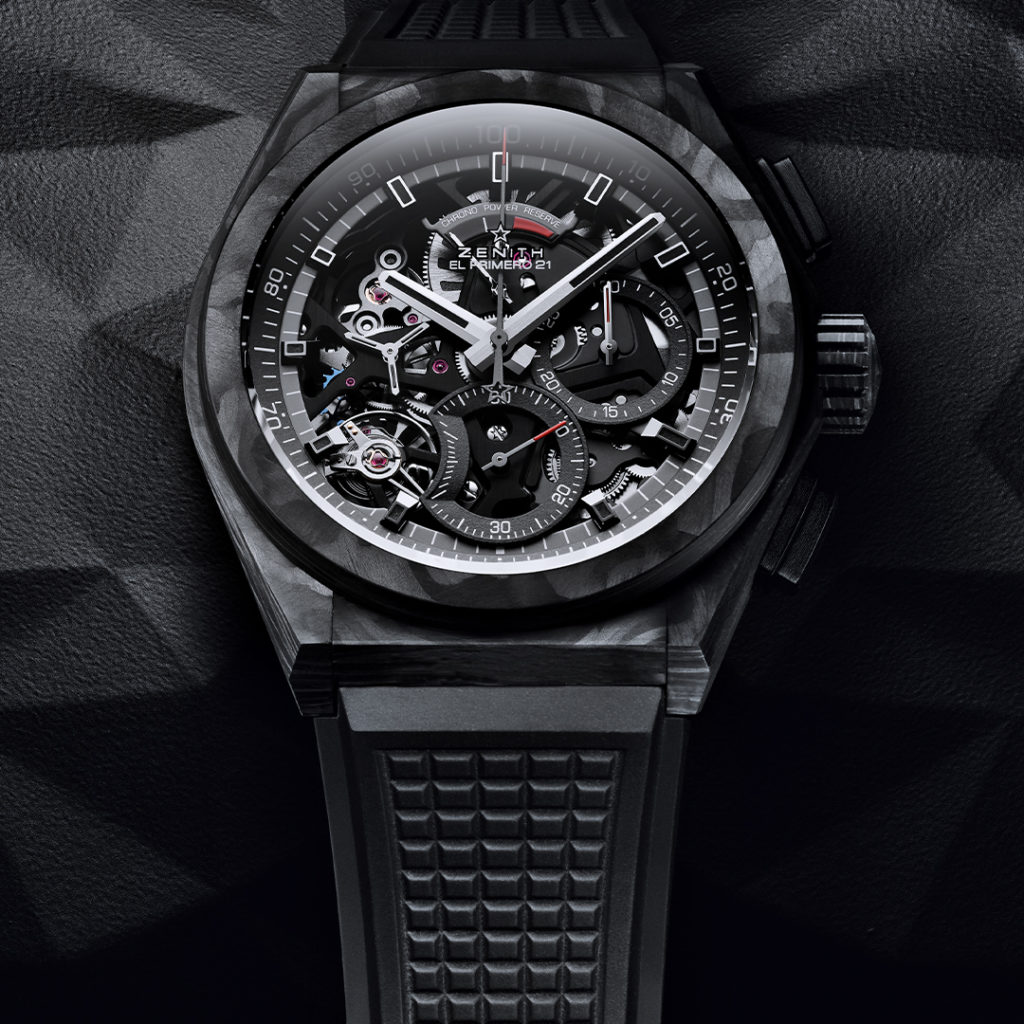
The Defy collection was my new growth engine that enabled me to keep our head out of the water.
Julien Tornare, Zenith CEO
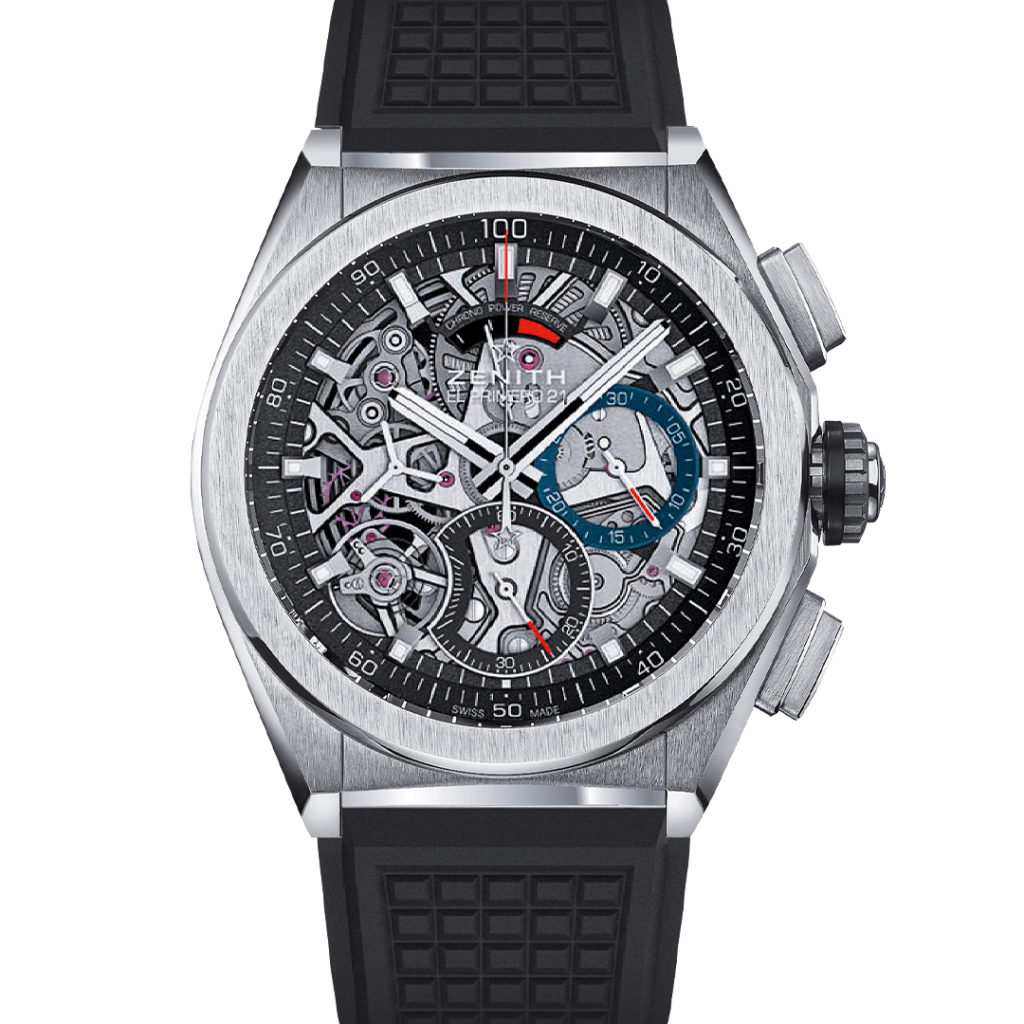
“A Taste for Performance”
In the late ’60s, the same time Zenith launched its legendary El Primero movement, the Defy started its career as Zenith’s “best-protected watch.” It was positioned as a rugged, heavy-duty sports watch, or the ideal “daily beater,” as this type of watch is often referred to among collectors nowadays. With “a patented movement suspension system plus an elastic shock-absorbing ring,” Zenith promoted the Defy simply as “a tough guy,” offering everything so that customers “may never need to buy another watch.” Furthermore, the list of features indeed was impressive. The first Zenith Defy (A3645) with Caliber 2552 PC came with a distinctive, surprisingly progressive octagonal case, water-resistant up to 300 meters, thanks to its screw-down mineral crystal, screw-down caseback and a screw-down crown. On top of that, the hardened mineral glass could easily be replaced, if needed, thanks to the outer screw-down ring with 16 facets. Simultaneously, Zenith also introduced the Defy Plongeur (A3648/A3649) with a similar case, but with a rotatable bezel on top and a crown positioned between 4 and 5 o’clock for increased protection and comfort. And the watches certainly lived up to expectations. In 1971, Zenith had six watches affixed to “the back wheel spokes of a motorcycle” during a speed contest at the Wembley stadium; all six Defy watches survived the test “very well.” In the same year, a Zenith Defy crossed the Channel on a monoski and afterward was also certified “to run as well as before.” Not long after that, the Le Locle-based brand expanded the collection with equally reliable women’s watches.
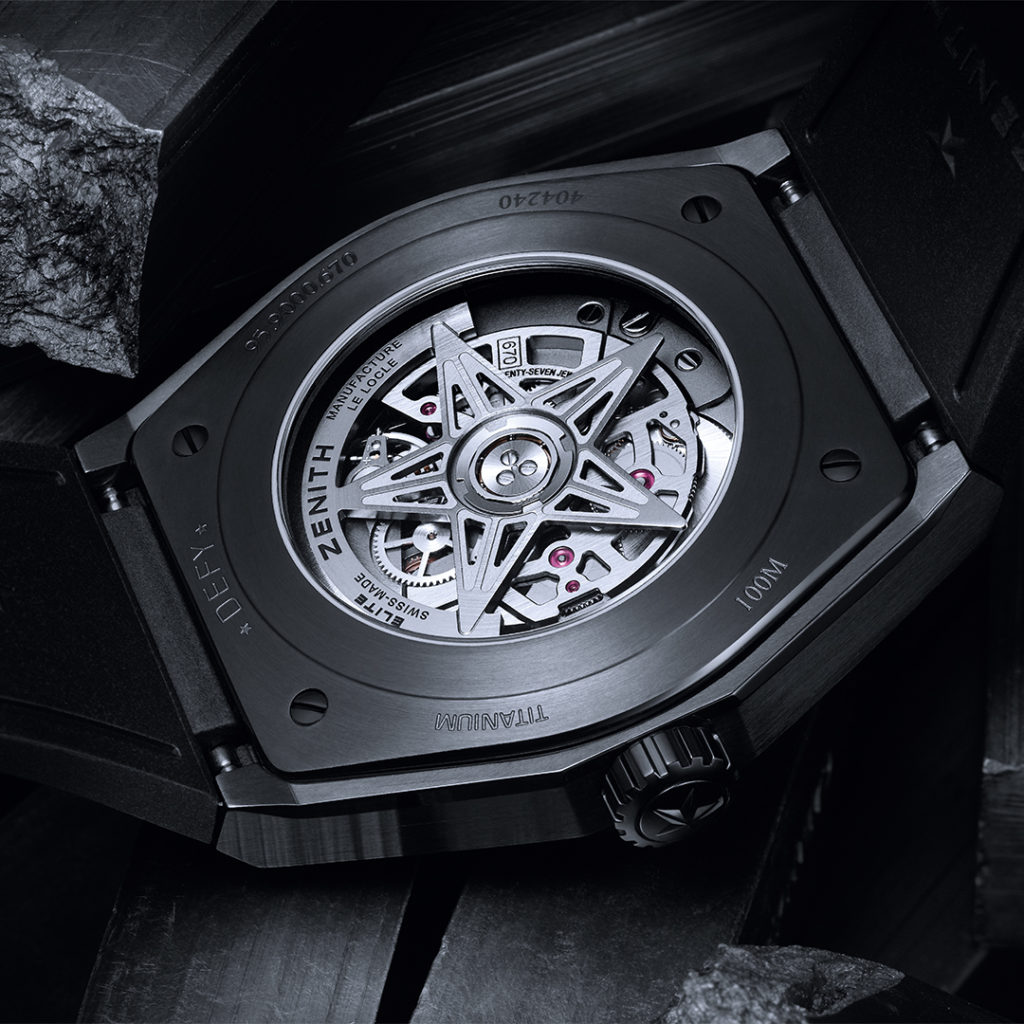
By 1977, the Defy range had begun to “make tomorrow’s promise come true today.” In ads from that period, “accuracy, ruggedness, water resistance, multifunctional practicalness” were cited as the four characteristics of the range. But while the Defy seemed almost indestructible, the industry was not. When the Quartz Crisis rattled the Swiss watch industry throughout the 1970s and 1980s, Zenith’s parent company decided the watchmaker would produce exclusively quartz watches to remain competitive. Fortunately, this decision was later reversed, and Zenith was purchased by the LVMH group in 2000. Six years later, the Defy collection was revived in 2006 with the “Defy Classic” and “Defy Xtreme.” A year later, the models already accounted for 25 percent of the brand’s turnover. While the design elements consisted of rather bold combinations of pink gold, titanium, steel, and rubber, the watches still offered “external and internal shock absorbers.” In 2008, Zenith added the Defy Xtreme Zero G, a watch with an entirely new mechanical concept for a balance mechanism that was placed on a gimbal system.
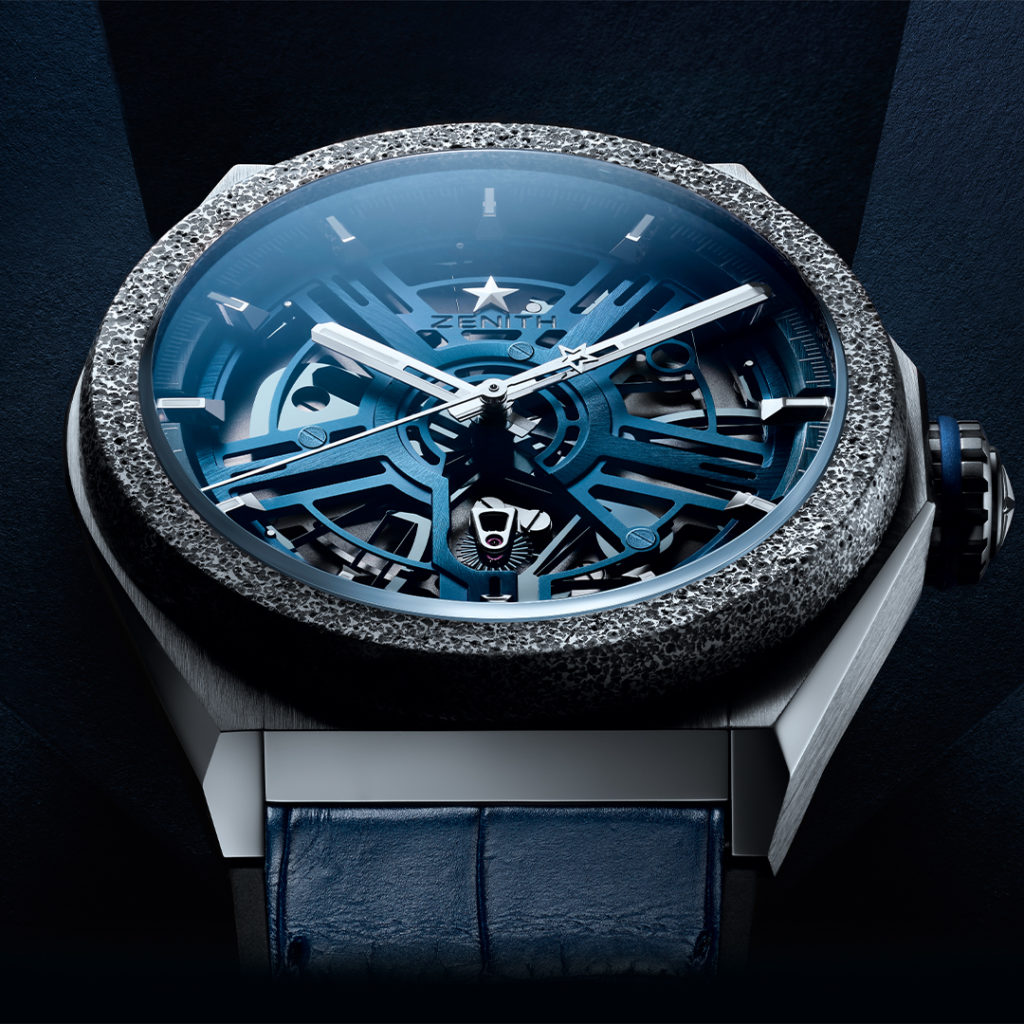
Entering the 21st Century of Watchmaking
In mid-2017, Julien Tornare became Chief Executive Officer at Zenith and ultimately the driving force to revitalize the traditional Swiss brand, a task he described as having “to wake up the sleeping beauty” when we sat down with him in January. More precisely, Tornare understood that Zenith needed a diversification beyond the El Primero, and a more contemporary approach to watchmaking in general. “That’s why we came with the Defy 21, the Defy Inventor, etc. Defy was my new growth engine.” Defy also became Zenith’s creative platform to launch a majority of the brand’s technological innovations. Working with LVMH’s Science Institute, Zenith revealed the Defy Lab in September 2017, a radically new watch with a new type of oscillator, designed as a compliant mechanism. The oscillator was etched from a wafer of silicon and combined the functions of the balance, balance spring, and lever in one single piece resulting in an “almost 10 times higher… degree of accuracy.” The Defy Lab, an extremely limited, pre-sold series of 10 timepieces, finally went into serial production as the Defy Inventor (Ref. 95.9001.9100/78.R920), unveiled at Baselworld 2019. The oscillator’s 129,600 vph, or 18 Hz, are still visible from the dial side of the movement thanks to an openwork architecture. Additionally, the 44-mm brushed titanium case has been equipped with a textured bezel made from Aeronith, a high-tech aluminum composite that Zenith says is the lightest such material in the world. Made from pure aluminum foam and stiffened with a polymer, Aeronith is three times lighter than titanium and lends the watch a definitive industrial-modern aesthetic.
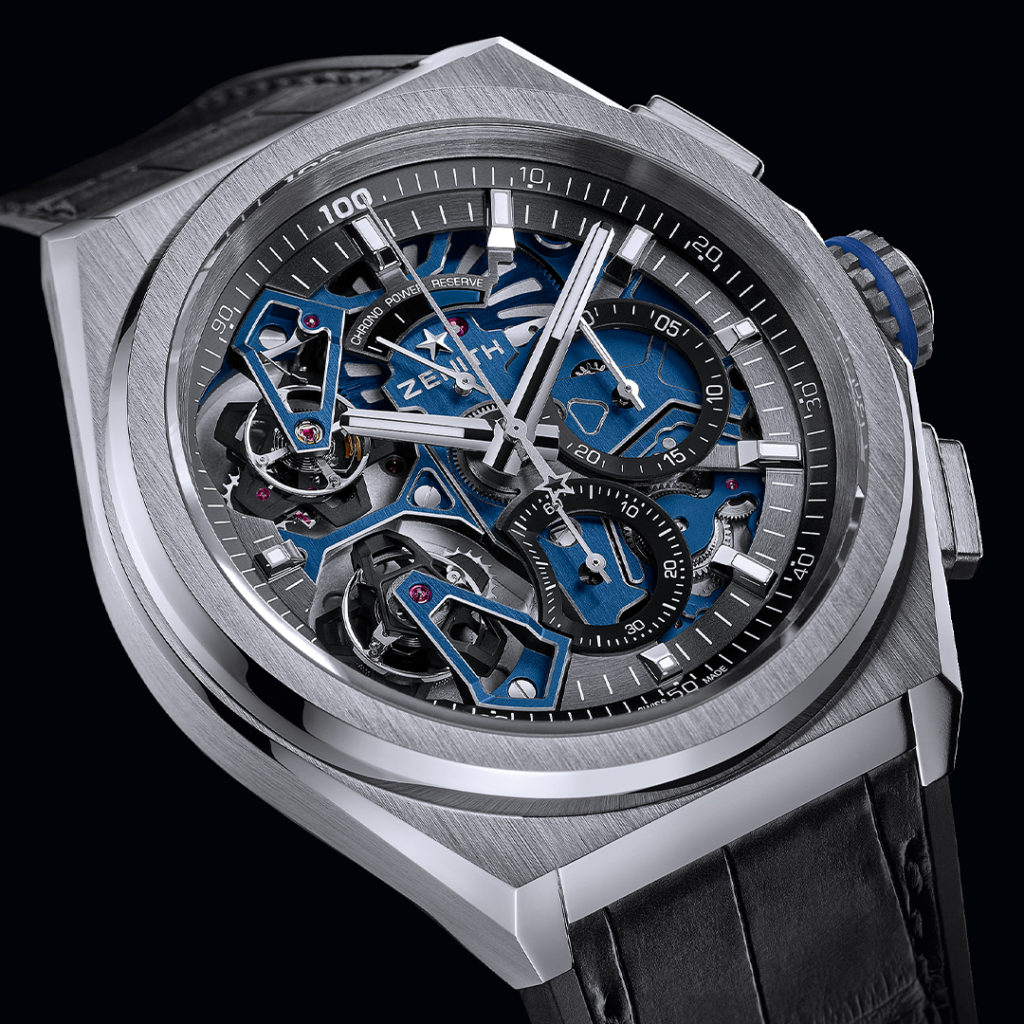
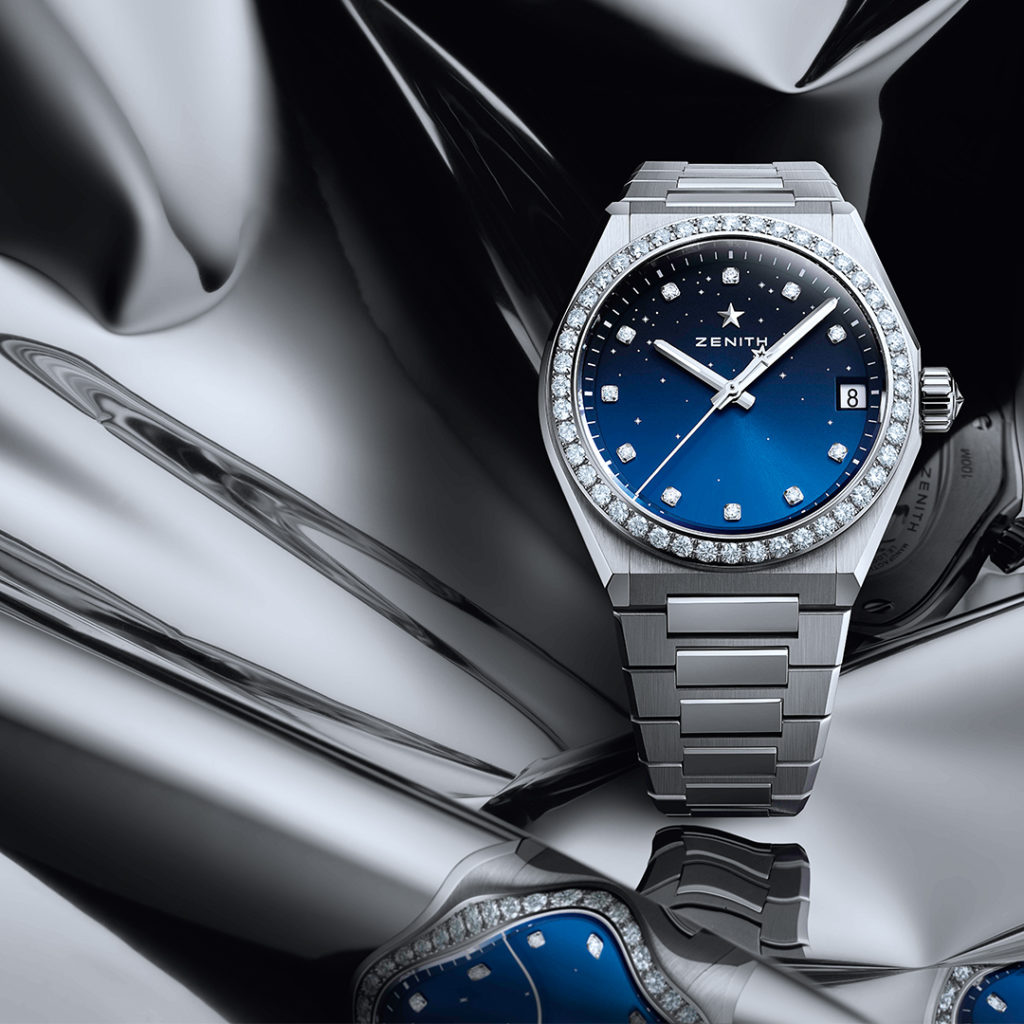
The same year saw the launch of the Defy El Primero Double Tourbillon (Ref. 40.9000.9020/78.R582 in platinum and 10.9000.9020/79.R918 in carbon), whose avant-garde design features two separate escapements and a stopwatch function that can measure elapsed times to 1/100th second.
Zenith also reintroduced the fusée-and-chain mechanism with the Defy Fusée Tourbillon. Available in two distinct case materials in carbon (Ref. 10.9000.4805/78.R916) and platinum (Ref. 40.9000.4805/75.R582), the chain alone is made of 575 individually hand-assembled components.

Today, the Defy collection consists of five product families: the Defy El Primero 21, with the 1/100th-second chronograph movement; the Defy Zero G with Gravity Control, the gyroscopic module that ensures horizontal positioning of the regulating organ (now only 30 percent of its initial volume); the Defy Classic automatic watches with titanium, ceramic or rose-gold cases (and soon carbon); the Defy Inventor; and, since 2020, the Defy Midnight, a women’s watch collection “in line with the 21st-century woman.” Additionally, Zenith recently unveiled a number of High Jewelry editions of two of its most emblematic pieces from the Defy collection, the Defy El Primero 21 and the Defy Classic.
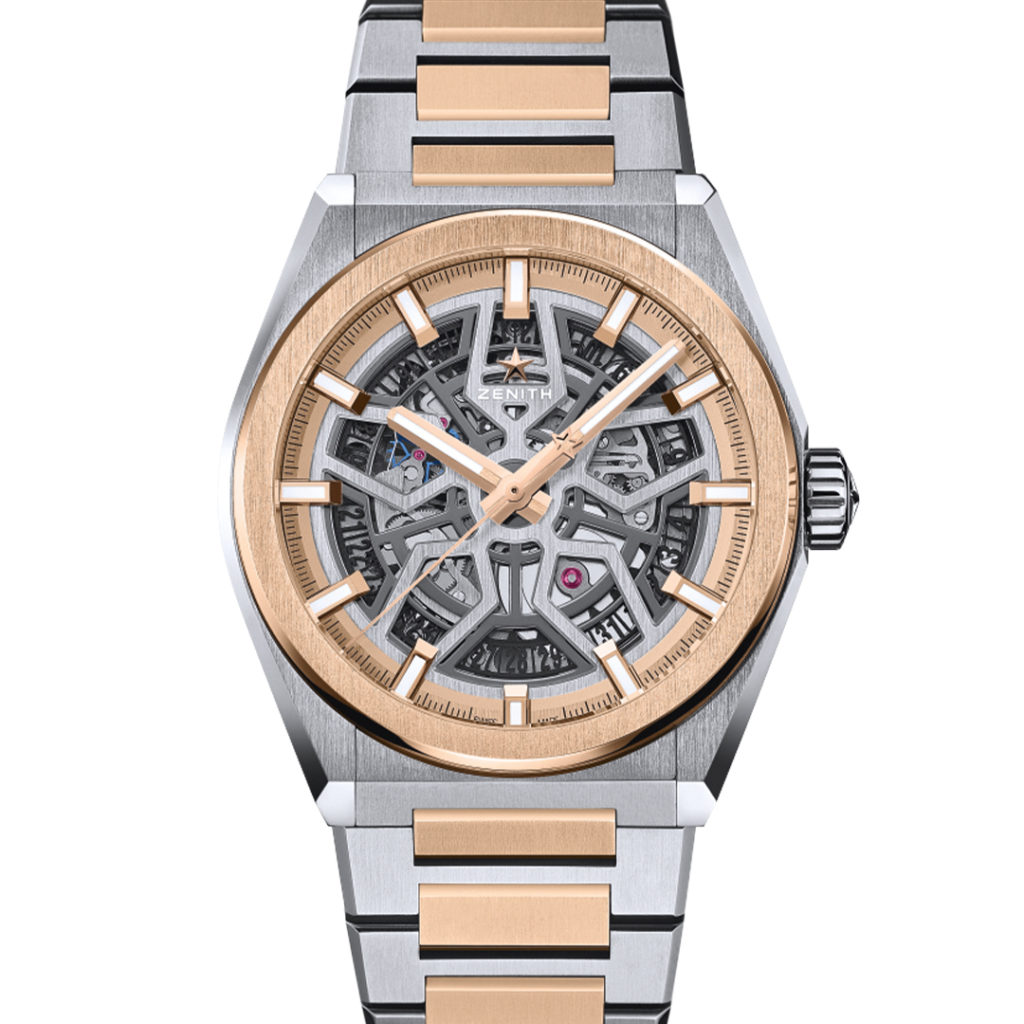
Inspiration from the Cosmos
Zenith undoubtedly looked to the sky when the brand created the Defy Midnight, a versatile women’s watch with a celestial dial. “With our newest models, it is the first time that Zenith has conceived women’s watches from the ground up,” said Tornare during the launch in January. Housed in a 36-mm stainless-steel case embellished with brilliant-cut diamonds, the dial of the Defy Midnight gives Zenith’s “time to reach your star” philosophy a literal, visual manifestation. Available in deep blue or gray colors, the dial features a glossy finish with a vertical gradient effect for more depth. Logically, the brand’s faceted star emblem is the highest, brightest point in the depicted night sky.
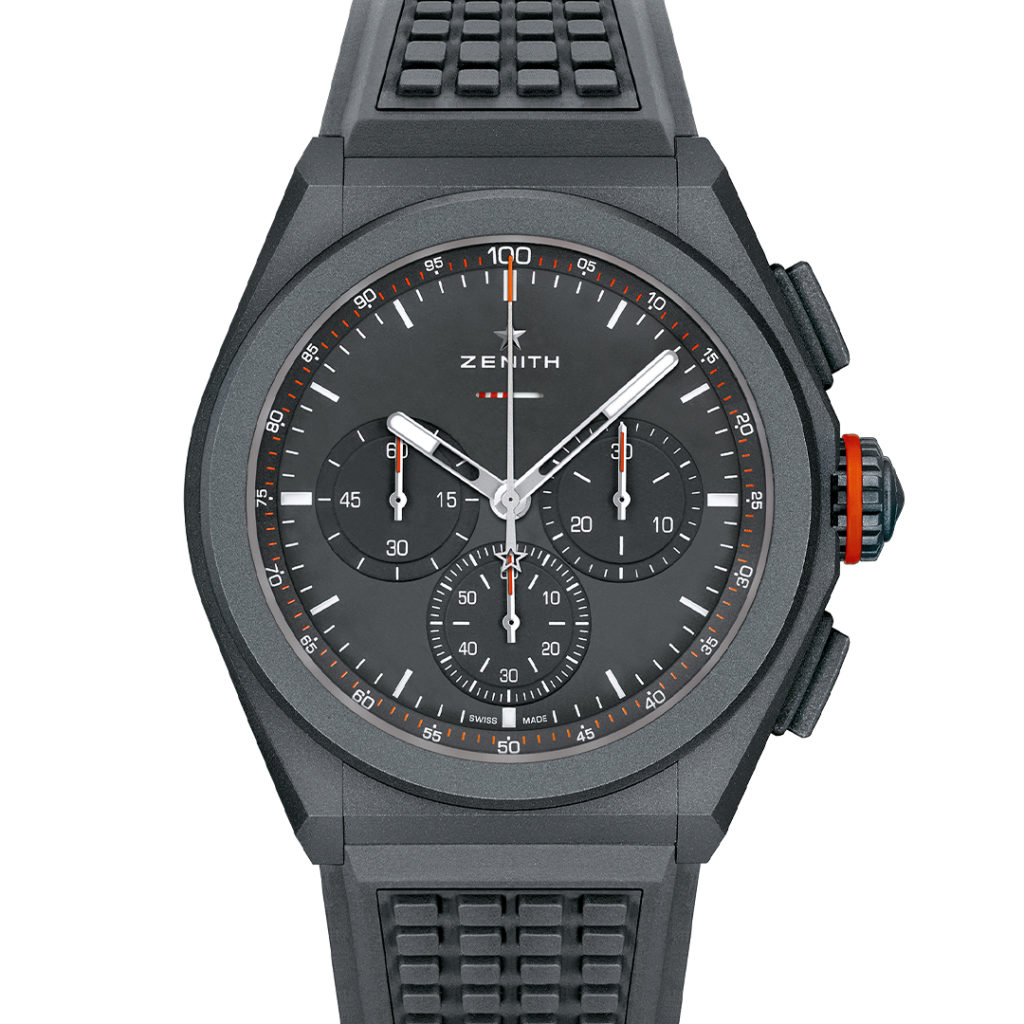
This for me is the best timepiece we have created with Zenith.
Gerry McGovern, Land Rover Chief Creative Officer
Completing the celestial landscape are stars of different sizes — some of which glow in the dark. A third dial made of white mother-of-pearl with a vertical-gradient effect evokes moonlight on a cloudy night. White diamonds are applied on every hour marker, except at 3 o’clock where the date window is placed. Equipped with the automatic Elite in-house movement Caliber 670, the Defy Midnight provides autonomy of 50 hours. The collection also features an assortment of bracelets and straps that can easily be swapped by the wearer, allowing the Defy Midnight to adapt itself to different looks and situations. Each Defy Midnight will come in a special box with three additional colored straps and an interchangeable folding clasp.
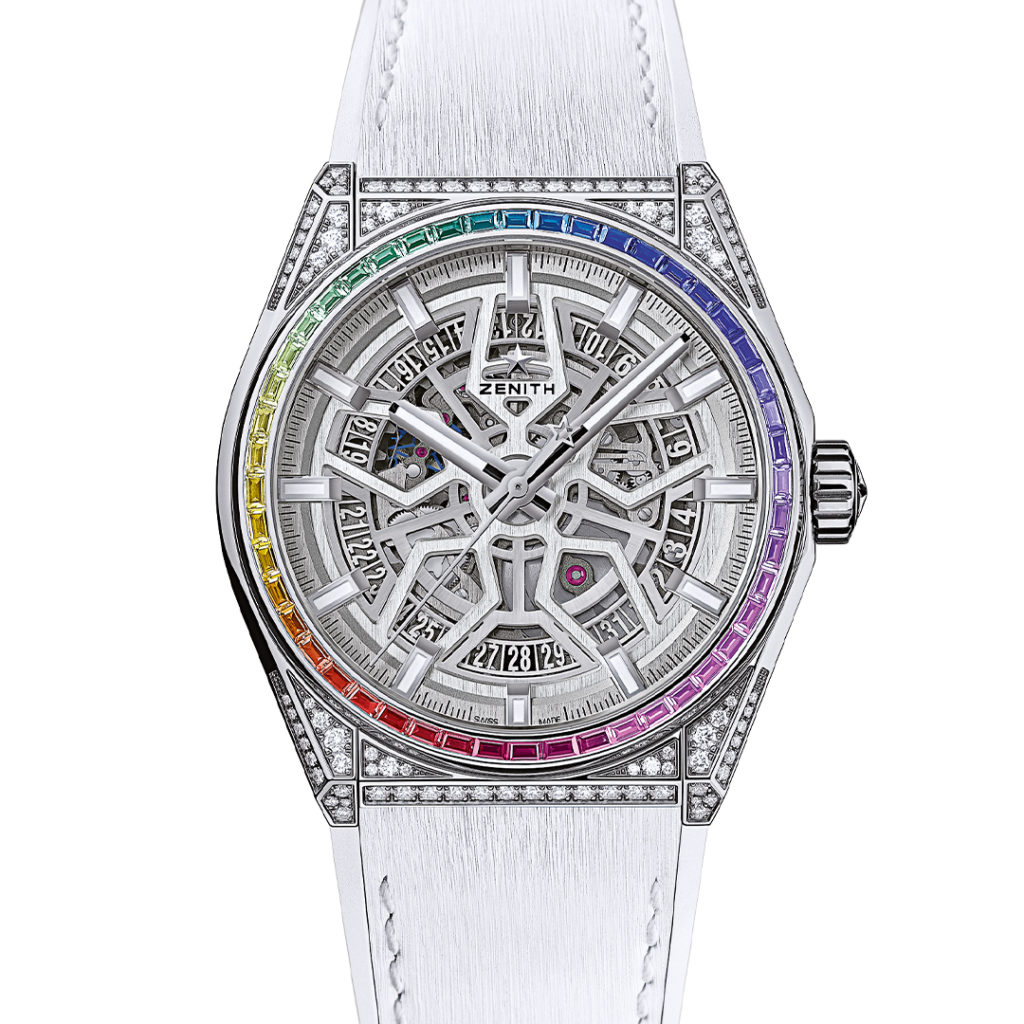
Return of the Defender
In January, Zenith also unveiled its fourth watch produced in collaboration with British car manufacturer Land Rover — the new limited-edition Defy El Primero 21 Land Rover (Ref. 97.9000.9004/01.R787). Like the previous three watches from the Land Rover x Zenith partnership, which began in 2016, this latest model is an automotive-influenced timepiece, in line with the understated elegance one would expect from these two historic brands. The timing of the watch’s release has been coordinated with that of Land Rover’s new 2020 Defender— an all-terrain SUV series first showcased in 1948 and making its return to the U.S. market after having been discontinued in 1997. The watch introduces a special redesign of the Defy El Primero 21 base model, using a 44-mm microblasted and faceted titanium case, boosted by its stylish chronograph pushers and orange-accented crown. The closed dial of the watch matches the case, and features a 1/100th-second chronograph counter on its outer edges, a printed white minutes ring just within it, and three subdials for running seconds, a 60-seconds counter and a 30-minute counter at the 9, 6 and 3 o’clock positions, respectively. The display also features, for the first time in a Defy 21, a linear power-reserve window.
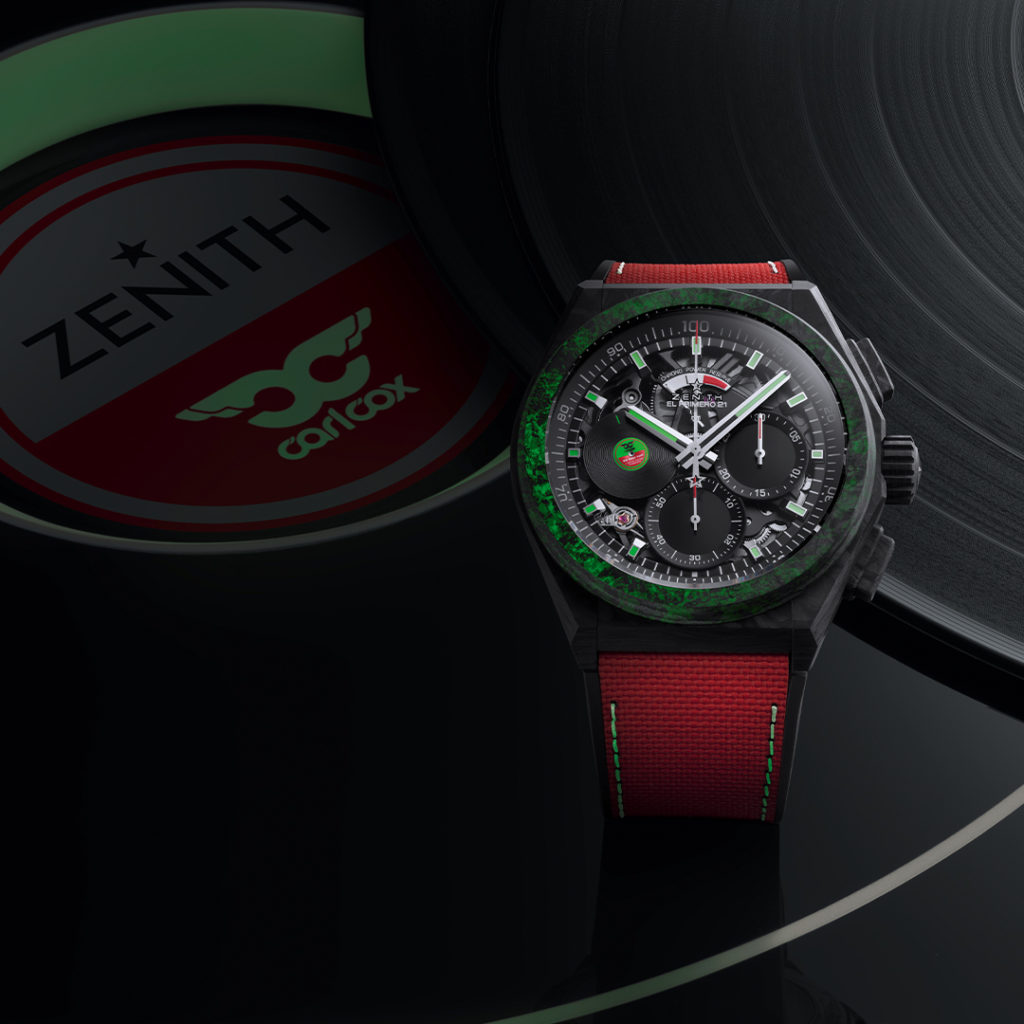
The engine is the El Primero 9004 automatic movement with a 50-hour power reserve — the same well-known super-high-frequency chronograph caliber used in the other Defy El Primero 21 models. The 250 pieces will be available with a gray rubber “Adventure” strap, with an additional canvas “Country” strap, both of which fasten to the wrist with a microblasted titanium double-folding buckle.
Creature of the Night
For 2020, Zenith also introduced its newest Friend of the Brand, world-renowned DJ and producer Carl Cox. For his first eponymous special-edition watch, the Defy 21 Carl Cox (Ref. 10.9001.9004/99.R941), limited to 200 pieces, Zenith came up with a carbon fiber bezel and strap stitching that glow in the dark. Additionally, the open dial “keeps the beat pumping” with a rotating disk shaped like a vinyl record at 9 o’clock, serving as a running seconds indicator. “I am very lucky that I am able to share my love of music all over the world. All of us have the power within us to feel the beat and dance — my job is to bring that energy out and to unite everyone on the dance floor. In a similar way, Zenith is about elevating the art of watchmaking and sharing its innovations with the world, so collaborating with them on a watch with a high-frequency beat felt very natural,” Cox said.
After more than 50 years, the Defy most definitely hasn’t lost its original “taste for performance.” But it appears that, with so many unique executions and complications, it’s now become more than ever an indicator of the creative potential of the Swiss watch industry.



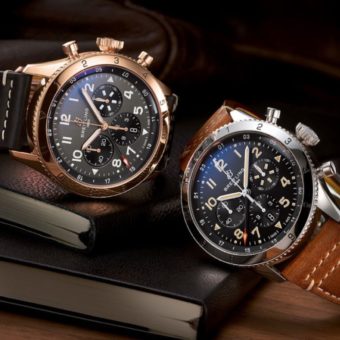



From 1989 till 1992 Zenith produced the El Primero Defy ref 19.2000.400 and 59.2000.400. Most with white dial, some with blue dial. Total production some 2.500 pieces to my knowledge.